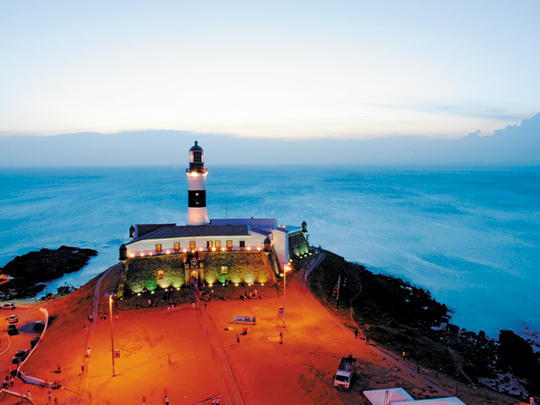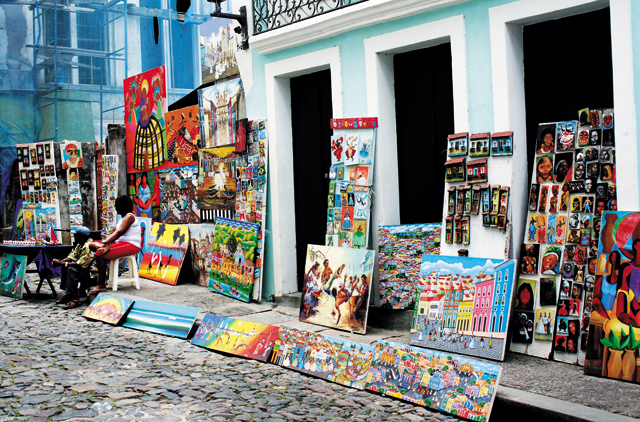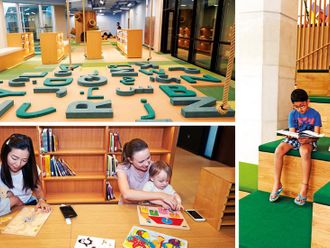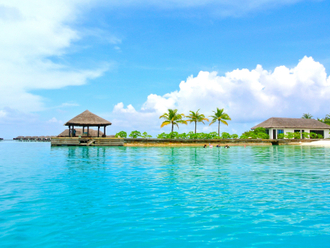
On a misty morning somewhere in 1509, waves lapped at the body of Portuguese explorer Diogo Correia who was washed up on an unknown shore. His wrecked ship had sunk along the rocky coastline of Salvador in Bahia. The curious local, a Tupinamba Indian, examined him closely and christened him Caramuru meaning ‘moray eel’.
This was the discovery of the New World in the Southern Hemisphere. Diogo went on to play a vital role in Brazil’s colonisation after marrying Paraguassu, the daughter of the Tupinamba chief. A testament to the adventures of the New World’s seafaring explorers can be found at the maritime museum in Salvador da Bahia today.
Salvador da Bahia is located on the northeast coast of Brazil and is the cultural heart of the state of Bahia. The city is influenced by its African roots, with over 80 per cent of its population being of African ancestry, evident in the cuisine, music, arts and colonial architecture of the region.
Every carnival brings the famed party to the Pelorinho, the main Afro-Brazilian hub of the city.
Now a Unesco world heritage site, Pelorinho (meaning whipping post), was once the place where slaves were auctioned and sold. After slavery was abolished in 1835, Pelorinho became a neglected part of the city until major restoration work began two decades ago and transformed the area into a major tourist attraction.
‘Pelo’, as it is referred to by locals, is situated in the upper part of Salvador. The view from the upper city is of the Bay of All Saints. The bay embraces the Atlantic Ocean and the natural harbour was so named having been discovered on All Saints Day. Yachts and fishing boats dot the harbour.
Colourful and energetic, the folkloric talent in Pelo spills out of its many clubs and restaurants, especially after sunset. It is renowned for its lively music, restaurants and vibrant nightlife.
While the Pelo square is an easy walk, the rest of the upper part of the city makes for a steep, cobblestoned walk that’s stressful to the feet. Street vendors sit by the roadside selling everything from oil paintings and sculptures to fruit and vegetables.
The colonial buildings seem to whisper secrets of the days when musicians sat in cafés composing songs and writers looked to the sea for literary inspiration.
It is in Pelo square that you will most likely catch a Capoeira performance – a war-like dance originating from the slaves. The lithe bodies of Brazilian youths twist and turn, the sun’s rays beating down on their sweat-beaded skin as they move to the pulsating brisk rhythm. This dance was how many slaves practised their fighting techniques, which also kept them extremely fit.
A quirky mobile coffee stall shaped like a truck caught my attention in the square. Brazilian coffee is renowned and is one of the country’s primary exports. Several ladies wearing bright red, yellow and blue headgear clad in local Baiana white dresses are so graceful they look like they’re dancing as they walk.
The Mercado Modelo appeared to be the place where all travellers ended up for either shopping or to experience a traditional Bahian meal. Situated across from the Elevador Lacerda in the lower part of the city, the Mercado Modelo was once the old Customs House.
Built in the late 19th century, the Elevador Lacerda connects the upper and lower levels of the city and runs all through the day. The Mercado Modelo screams ‘tourist trap’ but it’s charming nonetheless. Filling the lower part of the Mercado building are arts and crafts stalls. Airy restaurants are situated on the upper floors. Seated at a balcony table by a waitress in her fluffy white dress, I enjoyed my seafood basking in the sunlight while the music accompanying the Capoeira dancers drifted up from the street.
- Carnaval
Held every year in February, this thriving party should not be missed. Locals swear that Salvador da Bahia is the best place to be for this famous festive event. There are some differences between the way Carnaval is celebrated by the Cariocas (of Rio de Janeiro) and the Bahians.
The Bahians prepare for the festival months in advance. Large statues are erected along the streets and samba schools prepare large decorated floats that form part of the parade. It has been described as the largest and most energetic party on earth. Visitors are welcome to join in the festivities and dance on the streets alongside the floats.
- Traipse the sights
Museu Náutico da Bahia (Nautical Museum)
With a view of the Bay of All Saints, this old museum houses a collection of navigation maps, miniature ships and treasures from old shipwrecks.
Igreja de São Francisco (Church of Saint Francis)
Perhaps the most famous of all churches in Salvador, the church of Saint Francis merits a visit for its ornate interiors. In what can only be described as a stark contrast to austerity and propriety, the high-Baroque church boasts gold leaf patterns throughout its interior. Located at Pelo square, it was built in the early 18th century by colonialists. Rumour has it that over 100kg of gold was used for the elaborate interiors.
Igreja de Nossa Senhora do Rosário dos Pretos (The Church of Our Lady of the
Rosary of the Blacks)
This church, constructed for slaves and by slaves, took over a hundred years to build. The imagery in the church is a representation of their Afro-Brazilian heritage.
Casa de Jorge Amado
The museum pays tribute to Jorge Amado, one of Brazil’s most prolific writers. The museum boasts mostly Portuguese content. Dona Flor and Her Two Husbands (set in Pelo), Gabriela, Clove and Cinnamon and Tieta do Agreste are but a few of Amado’s famous works housed here.
Catedral-Basílica (Cathedral Basilica)
Built in the 17th century in classic Baroque style, and featuring excessive gold work, it was restored in 1996. The Basilica is unique for its African imagery. The Bahia Symphonic Orchestra often holds concerts here. It is located over the Terreiro de Jesus square.
Salvador has something for all – museums, art, music and dance.And of course plenty of history, making it one of the most popular destinations
FAST FACTS
What to eat?
Bahian cuisine is seafood- and coconut-based. Palm oil is used in most dishes. A typical ‘fast food' meal that is also considered a poor man's meal is the Acaraje, which is made of beans deep fried in palm oil with Vatapa - a filling of fish, meat and cassava flour. These are available fresh at street side stalls.
Popular mealtime dishes include Caruru (with okra) and Moqueca de piexe (marinated fish that is barbecued in banana leaves). How to get thereEmirates Airlines has flights from Dubai to Sao Paolo. Domestic airlines Varig and Tam offer connecting flights from Sao Paolo to Salvador da Bahia.
How to get there
Emirates Airlines has flights from Dubai to Sao Paolo. Domestic airlines Varig and Tam offer connecting flights from Sao Paolo to Salvador da Bahia.







